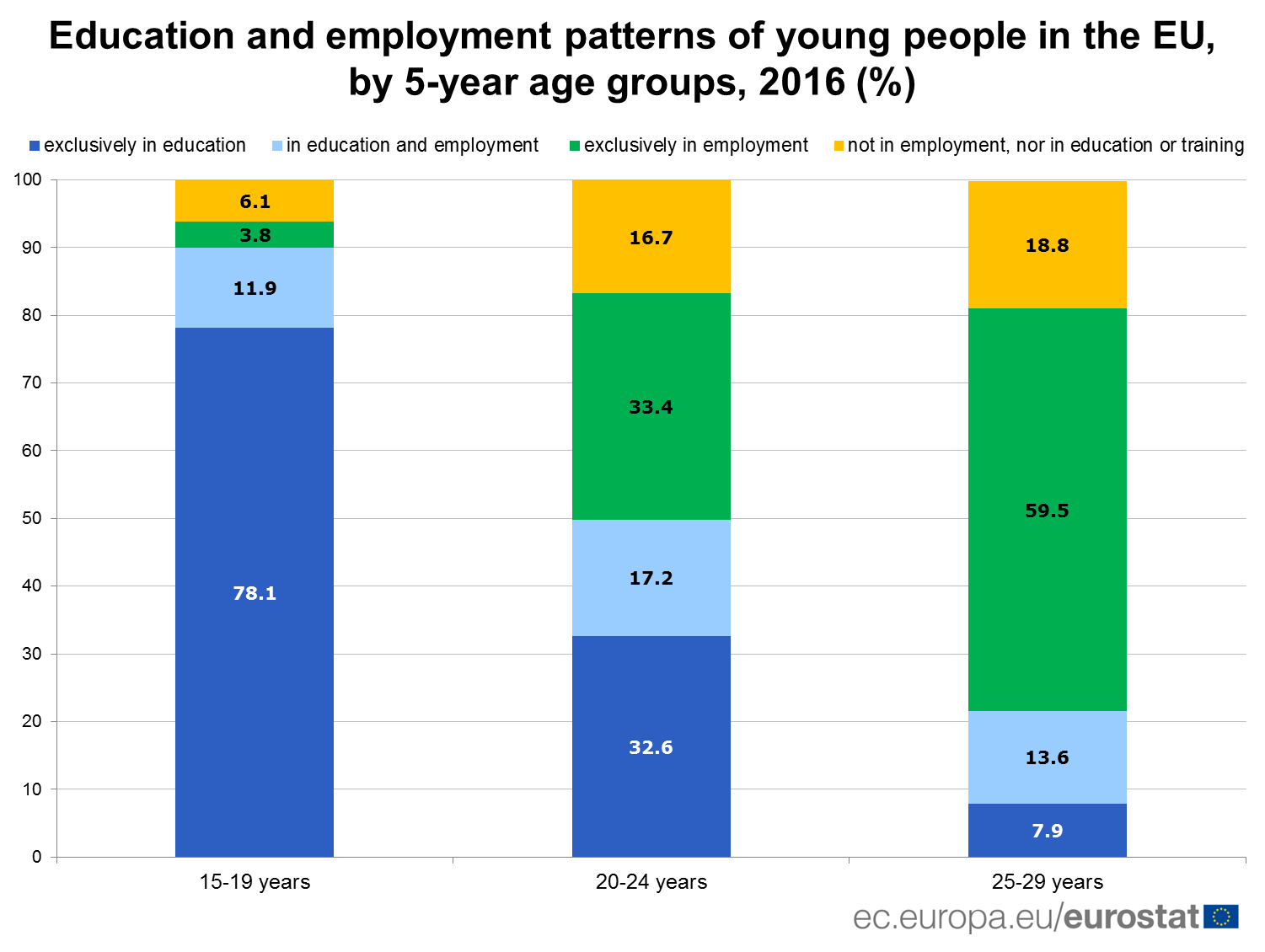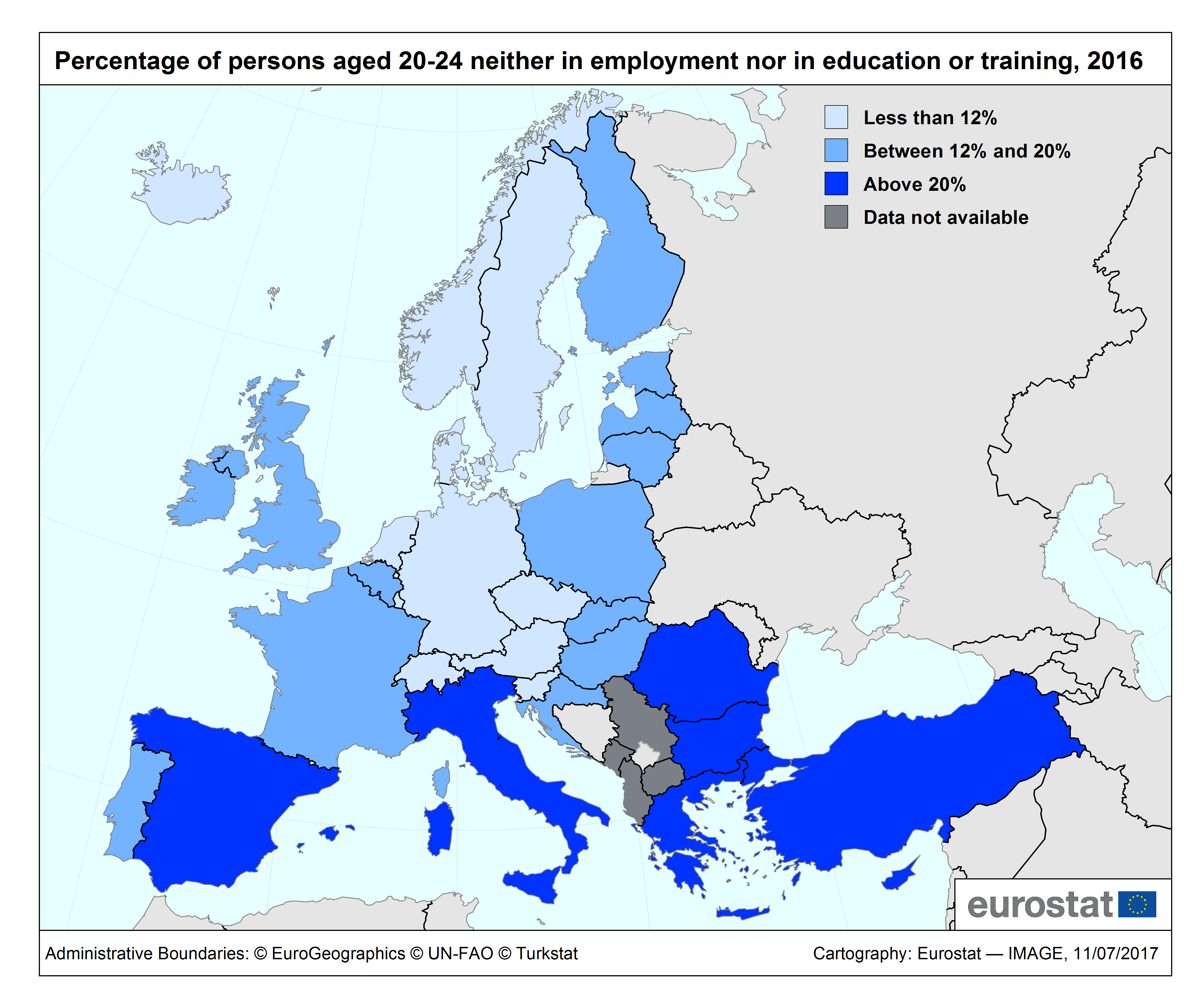Almost 90 million people aged 15-29 live in the European Union (EU). This represents 17% of its population. The personal circumstances of young people in the EU are often very different, with education and employment patterns varying considerably between Member States and by age group.
Our news item marks International Youth Day.
Education or employment, both or neither?
Between the ages of 15 and 29, a significant shift from the world of education to the world of employment occurs in the lives of young adults. While a vast majority of those in the 15-19 age group in 2016 was in education, the opposite was true for those aged 25-29. Most of them were in employment. In-between, young people aged 20-24 were relatively evenly distributed between being in education and employment.
Moreover, the proportion of young people neither in employment nor in education or training (NEET) increases considerably with age. The NEET rate, which stood at 6.1% for the age group 15-19 in 2016, tripled to 18.8% for those aged 25-29.
The source dataset can be found here.
Largest share of NEET aged 20-24 in Italy, lowest in the Netherlands
In 2016, almost 1 in 3 young people aged 20-24 was neither in employment nor in education or training in Italy (29.1%), nearly 1 in 4 in Romania (23.6%), Greece (23.0%), Bulgaria and Cyprus (both 22.7%) and about 1 in 5 in Spain (21.2%) and Croatia (19.6%).
In contrast, the lowest NEET rate among young people aged 20-24 was recorded in the Netherlands (6.9%), ahead of Malta (8.1%), Denmark (8.5%), Luxembourg (9.0%) and Sweden (9.3%).
At EU level, the equivalent of the total population of Ireland – almost 5 million young persons aged 20-24 (16.7%) – were in 2016 neither in employment nor in education or training.
The source dataset can be found here.
Highest increase in NEET rate in Cyprus, Spain and Italy, highest drop in Bulgaria and Germany
Although the proportion of young people aged 20-24 neither in employment nor in education or training remained relatively stable in the EU as a whole between 2006 and 2016, important changes occurred over the last decade in individual Member States. In twelve of them, the NEET rate has decreased, with the most significant reductions registered in Bulgaria (from 29.3% in 2006 to 22.7% in 2016, or -6.6 percentage points – pp), Germany (-5.5 pp), Poland (-3.6 pp), Slovakia and Sweden (both -3.4 pp).
In the other sixteen Member States, the situation has deteriorated. The largest increases in the proportion of people aged 20-24 neither in employment nor in education or training were registered in Cyprus (from 13.7% to 22.7%, or +9.0 pp), Spain (+8.0 pp), Italy (+7.5 pp), Greece (+6.2 pp), Ireland (+5.1 pp), Romania (+4.7 pp), Portugal (+4.6 pp) and the United Kingdom (+4.2 pp).
For more information:
Eurostat Statistics Explained article on NEET




